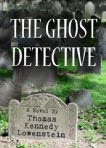Shippen Manor was built between 1760 to 1765 for Dr. William Shippen II and his brother Joseph Shippen II in Oxford, New Jersey. The Shippens family were a wealthy, prominent Philadelphia family. The Manor is Georgian style, constructed with two-foot thick stone walls, and three chimneys. The ground floor consisted of six rooms with two bed chambers and four garret rooms upstairs. Dr. Shippen was a self taught physician and a member of the Continental Congress who had the privilege of attending to Benjamin Franklin, John Hancock, George Washington, and Generals Gage, Howe, and Lafayette. William’s son Joseph W. Shippen began managing the property in the early 1760s. He acquired the housekeeping services of Martha Axford. During her “housekeeping” time in the house, the two had seven children. However, no documentation has been found to provide proof of marriage between Joseph and Martha. He died in 1795 without a will. His father moved in the Manor to overseen furnace operations and ...

